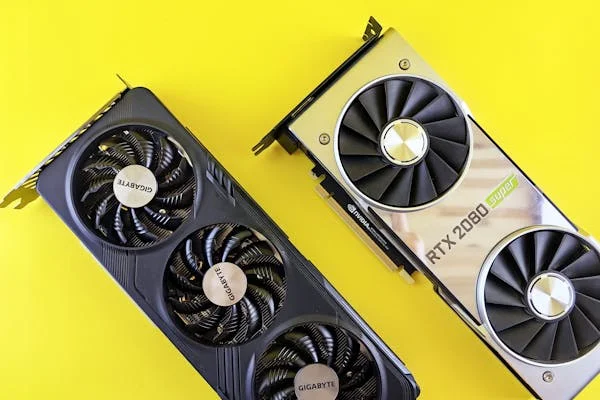Introduction
Stock Core Clokc of RTX 3080 Gigabyte Gaming OC is a popular and powerful graphics card that stands out in the gaming and professional graphics world. Its impressive performance, combined with features like overclocking capabilities, make it a top choice for enthusiasts. In this article, we’ll dive deeper into the stock core clock of the RTX 3080 Gaming OC, its impact on gaming performance, overclocking potential, and the factors that influence its performance in real-world applications.
What is Stock Core Clokc of RTX 3080 Gigabyte Gaming OC?
The stock core clock is the default frequency at which the GPU’s processor operates. It’s one of the key factors that determine how fast a graphics card can process data and perform tasks. In the case of the Gigabyte RTX 3080 Gaming OC, the stock core clock plays a significant role in overall performance. But what exactly are these clock speeds, and how do they affect your gaming and professional applications?
Stock Core Clock Specifications of the RTX 3080 Gaming OC
- Base Clock Speed: The base clock speed of the RTX 3080 Gaming OC is 1440 MHz. This is the minimum frequency at which the GPU will operate under standard conditions.
- Boost Clock Speed: The boost clock is the maximum frequency the GPU will run at under load conditions, such as gaming or high-performance computing tasks. For the RTX 3080 Gaming OC, this boost clock is 1710 MHz out of the box. However, factory-overclocked models can reach speeds as high as 1800 MHz.
How Clock Speed Affects Performance
The core clock speed influences how fast the GPU can perform tasks, but it’s not the only factor at play. The architecture, memory bandwidth, and other aspects of the card contribute to overall performance. Still, the higher the clock speed, the more data the GPU can process, leading to better performance in applications like gaming, 3D rendering, and machine learning.
Impact on Gaming Performance
For gamers, the core clock speed is crucial. A higher clock speed means the GPU can render graphics more efficiently, leading to smoother performance and higher frame rates. The RTX 3080 Gaming OC’s stock core clock ensures that most modern games will run at high frame rates, even at higher resolutions such as 4K or 1440p.
- High-Resolution Gaming: In graphically demanding games, a high core clock can prevent stuttering and provide more consistent frame rates.
- Ray Tracing and DLSS: The RTX 3080 also supports ray tracing and DLSS (Deep Learning Super Sampling), both of which require significant GPU power. With the stock core clock, the RTX 3080 Gaming OC can handle these features more efficiently, making it suitable for cutting-edge gaming experiences.
Core Clock vs. Memory Clock: What’s the Difference?
When discussing GPU performance, it’s easy to get caught up in core clock speed. However, there is also memory clock speed, which is equally important.
- Core Clock: Refers to the speed at which the GPU core (processor) operates.
- Memory Clock: Refers to the speed at which the VRAM (Video RAM) operates.
For the RTX 3080, the memory clock is set at 19 Gbps (Gigabits per second) across its 10 GB of GDDR6X memory. Both the core clock and memory clock work together to enhance gaming and processing performance.
Understanding the Boost Clock Mechanism
The boost clock is the highest clock speed the GPU can reach under load conditions, but it’s not always maintained. The GPU operates with a dynamic boost mechanism, meaning it can increase its clock speeds temporarily when demand is high, like during gaming sessions or when running intensive applications.
- The RTX 3080 Gaming OC can dynamically boost beyond its stock boost clock (1710 MHz) when temperatures and power limits allow it, pushing the clock speeds up to 1800 MHz or higher.
- Thermal and Power Limits: The performance of the GPU is also influenced by its temperature and power consumption. If the GPU gets too hot, the boost clock will be throttled down to prevent overheating.
Overclocking the Gigabyte RTX 3080 Gaming OC
While the stock core clock is set at a factory-defined level, the RTX 3080 Gaming OC is designed with overclocking in mind. Overclocking refers to increasing the core clock and memory clock beyond their stock values to push the performance even further.
Overclocking Tools for RTX 3080 Gaming OC
Gigabyte provides AORUS Engine, a software tool that allows users to fine-tune their GPU’s performance by adjusting clock speeds, fan curves, voltage, and power limits. Overclocking software can help users achieve higher clock speeds to improve performance in gaming and demanding workloads.
Some of the tools and settings available for overclocking the RTX 3080 include:
- Core Clock Adjustment: Increase the base and boost clock speeds to achieve higher performance.
- Memory Clock Adjustment: Increase the VRAM clock for faster data transfer between the GPU and memory.
- Fan Speed Adjustment: Control the fan speed to maintain a cool operating temperature when overclocking.
Benefits of Overclocking
Overclocking can bring noticeable performance improvements, but it does come with potential risks, including higher temperatures and power consumption. Some of the benefits of overclocking include:
- Improved Frame Rates: By increasing the clock speeds, you can achieve higher frame rates, especially in demanding games or applications like 3D rendering.
- Better Performance in Rendering and Productivity: Overclocking can help achieve better rendering times for professionals working with video editing, 3D modeling, and AI workloads.
Risks of Overclocking
Although overclocking can provide substantial gains in performance, there are risks to consider:
- Higher Power Consumption: Overclocking the GPU increases its power requirements, which can put stress on your PSU (Power Supply Unit).
- Increased Heat Generation: Overclocking leads to more heat, requiring effective cooling solutions to prevent overheating.
- Potential for Instability: Pushing your GPU too far can result in instability, crashes, or reduced lifespan.
How to Overclock the RTX 3080 Gaming OC Safely
- Install AORUS Engine or another overclocking tool.
- Gradually increase the core and memory clock speeds in small increments (e.g., 10-20 MHz at a time).
- Run stress tests using benchmarks like 3DMark or Unigine Heaven to test stability.
- Monitor the GPU temperature and performance. If the card becomes too hot (above 85°C), reduce the clock speeds or improve cooling.
- Once stability is achieved, lock in the overclock settings.
Temperature and Cooling Solutions
The RTX 3080 Gaming OC features an advanced cooling system that helps maintain optimal temperatures even under heavy loads. Gigabyte’s WindForce 3X cooling system, which includes three fans, ensures efficient heat dissipation during extended gaming sessions.
Factors Affecting Cooling Performance
- Ambient Temperature: The temperature of your room or environment can influence GPU cooling performance.
- Case Airflow: The overall airflow inside your PC case plays a critical role in cooling the GPU. A well-ventilated case ensures that heat is effectively dissipated.
- Fan Speed Settings: The fan speed plays a crucial role in cooling performance. Overclocking the GPU might require increasing fan speeds to keep temperatures in check.
Maximizing Cooling for Overclocking
To achieve optimal cooling when overclocking, consider the following:
- Increase Case Fans: Adding more fans to your PC case can improve airflow and cooling.
- Improve GPU Cooling: Consider investing in third-party GPU cooling solutions like water cooling for extreme overclocking.
- Monitor Temperature: Use software tools like MSI Afterburner or GPU-Z to monitor the temperature of the RTX 3080 during gaming or rendering sessions.
Power Consumption and Efficiency
With higher clock speeds come higher power demands. The RTX 3080 Gaming OC has a TDP (Thermal Design Power) of around 320 watts.
Power Supply Requirements
When overclocking or pushing your RTX 3080 to its limits, make sure your power supply unit (PSU) is capable of handling the increased power consumption. For the RTX 3080, it’s recommended to have a PSU with a minimum rating of 750 watts.
Power Efficiency
Even though the RTX 3080 Gaming OC is a power-hungry card, it still offers good power efficiency, especially when compared to its predecessor, the RTX 2080. Gigabyte’s implementation of efficient power delivery systems helps ensure stable operation without excessive power draw.
Conclusion
Stock Core Clokc of RTX 3080 Gigabyte Gaming OC stands out as a high-performance graphics card that offers excellent stock core clock speeds, capable of delivering smooth gameplay and enhanced productivity. While the stock clock speeds of 1440 MHz (base) and 1710 MHz (boost) are already impressive, overclocking allows users to push the card even further for higher frame rates and better performance in demanding applications. However, it’s important to keep in mind the temperature, cooling, and power requirements when overclocking the card.
Whether you are a gamer looking for the best performance or a professional requiring powerful GPU processing, the Stock Core Clokc of RTX 3080 Gigabyte Gaming OC offers both stock and overclocked options to meet your needs. With proper cooling and power management, this card can provide top-tier performance for years to come.







